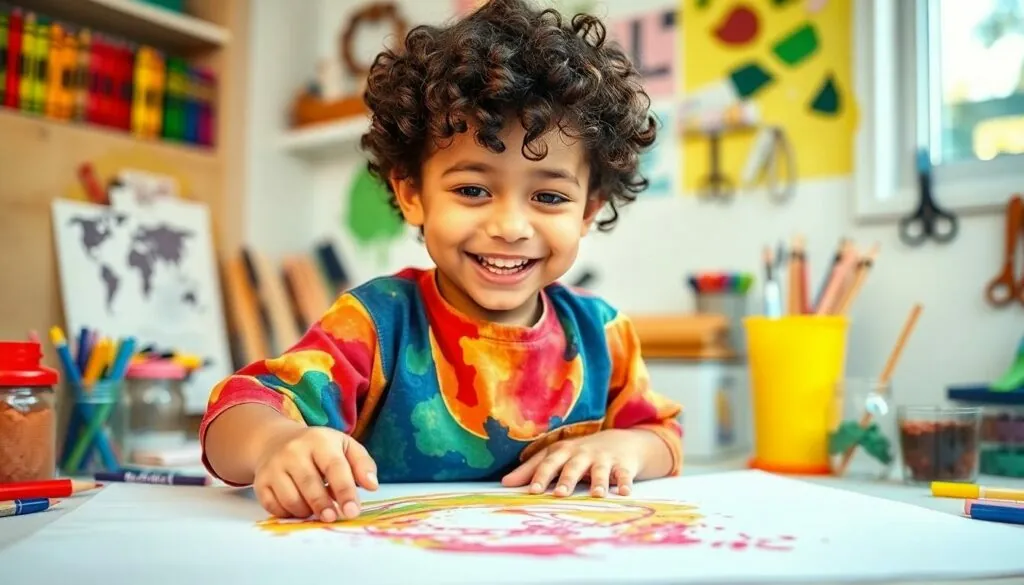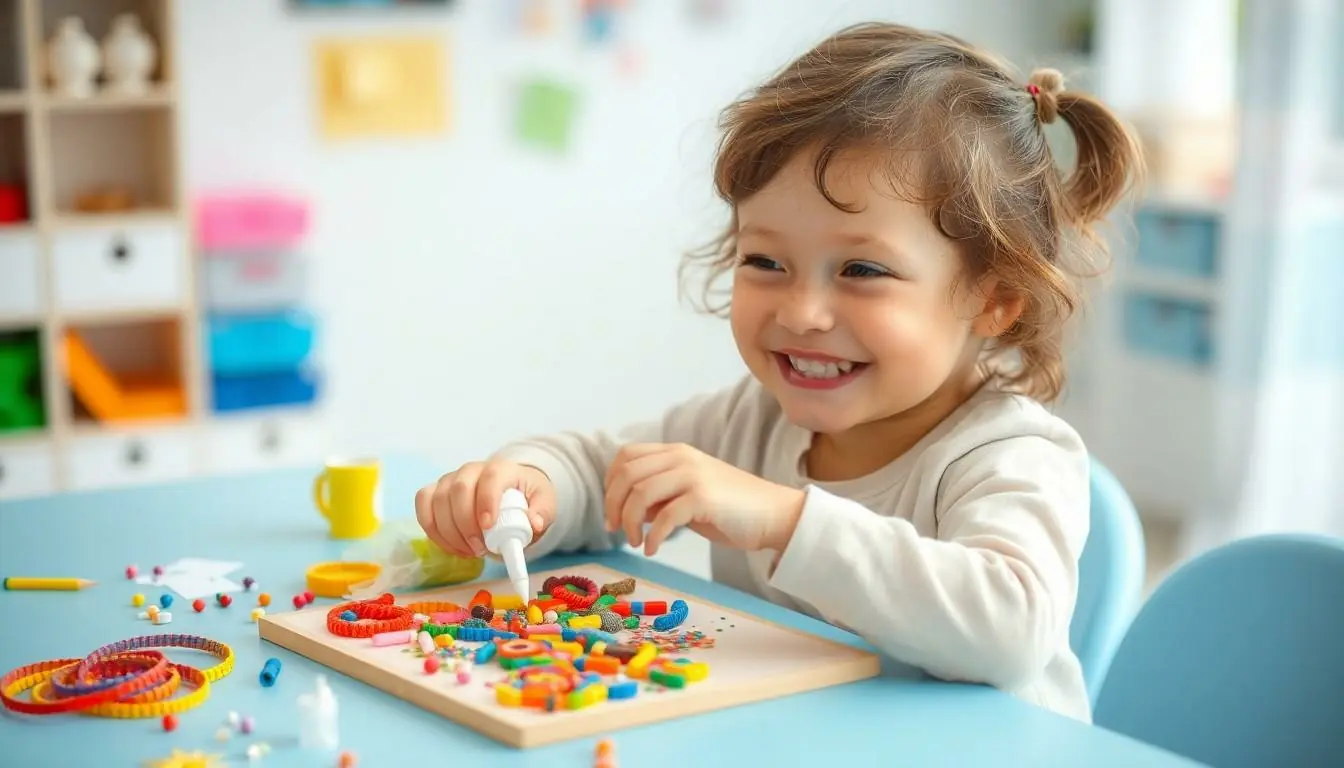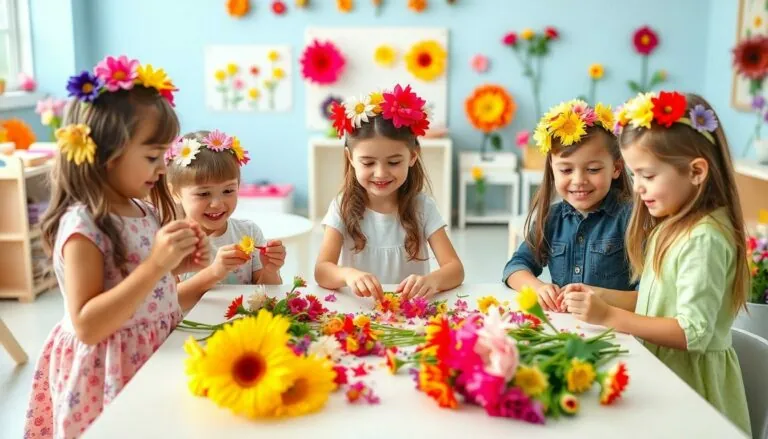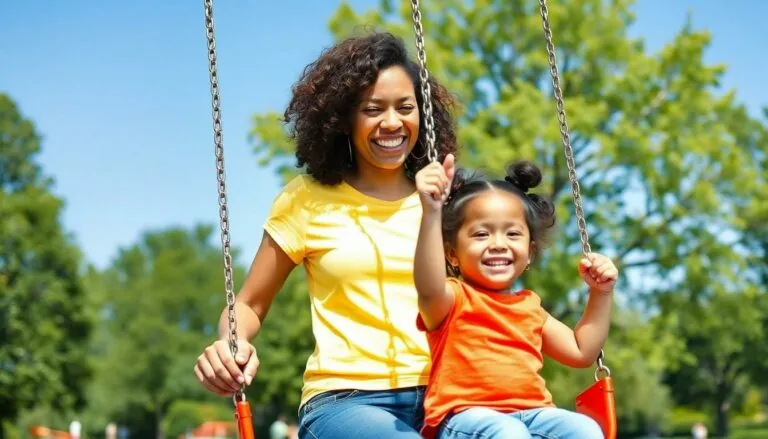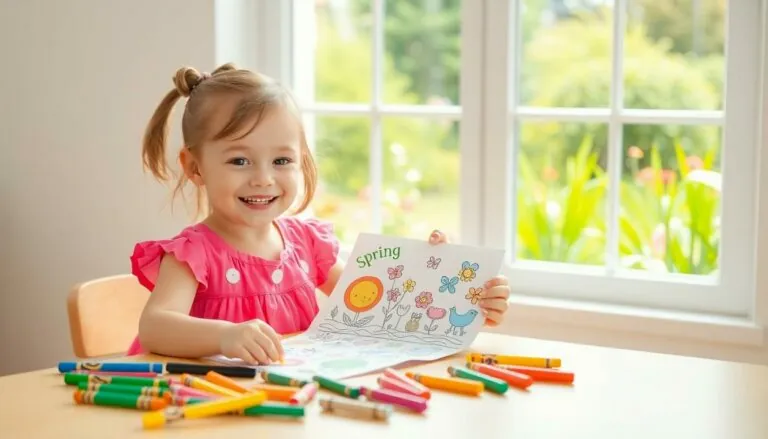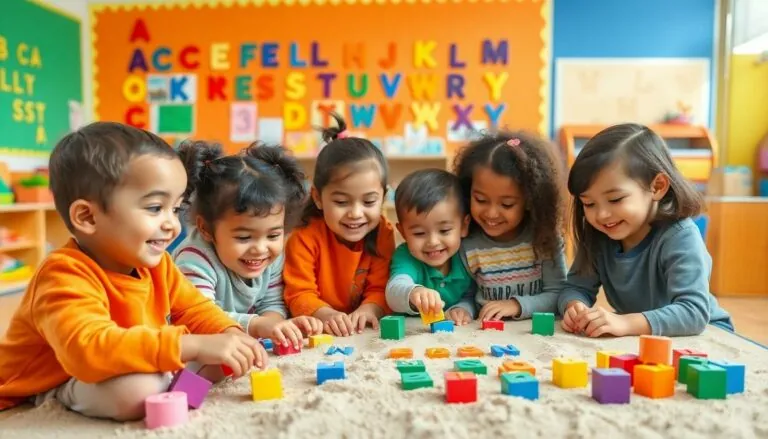Table of Contents
ToggleArts and crafts for preschoolers aren’t just about glue sticks and glitter; they’re the secret sauce to sparking creativity and building essential skills. Imagine tiny hands creating masterpieces that could rival the Mona Lisa—if only she had a few more finger paints! These activities not only keep little ones entertained but also promote fine motor skills and imaginative thinking.
Parents and educators know that engaging kids in arts and crafts can turn a rainy day into a colorful adventure. With a splash of imagination and a dash of mess, preschoolers can explore their artistic side while developing confidence and self-expression. So grab those crayons and let’s dive into a world where creativity knows no bounds—because who wouldn’t want to see their fridge transformed into an art gallery?
Overview of Arts and Crafts For Preschoolers
Arts and crafts for preschoolers serve as essential tools for holistic development. Engaging in these activities fosters creativity and enhances fine motor skills. Activities such as finger painting, collage making, and clay modeling encourage self-expression. Children learn to manipulate materials, which improves their hand-eye coordination.
Developmentally, arts and crafts support cognitive growth. Problem-solving emerges as kids navigate how to combine colors and materials. Social interaction increases when kids collaborate on projects, fostering teamwork and communication skills. Sharing supplies and ideas builds a sense of community among peers.
Additionally, arts and crafts lay the groundwork for emotional development. Creating art allows preschoolers to express feelings and emotions visually. This expression can lead to increased confidence as children share their creations with others. Celebrating their achievements reinforces a positive self-image.
Incorporation of themed projects based on seasons or holidays enhances engagement. For example, making leaf rubbings in the fall introduces nature exploration. This context connects learning with the environment, making learning more relevant and impactful.
Lastly, integrating arts and crafts into the daily routine nurtures a love for creativity. Regular exposure cultivates imagination, helping children envision broader concepts. Establishing a dedicated space for craft activities invites ongoing exploration and experimentation.
Arts and crafts for preschoolers extend beyond mere play. They prepare children for future learning experiences by laying vital developmental foundations. Each project contributes to a richer understanding of the world around them.
Benefits of Arts and Crafts For Preschoolers
Engaging in arts and crafts offers numerous benefits for preschoolers. These activities provide a pathway for essential skill development and foster creativity.
Development of Fine Motor Skills
Arts and crafts activities significantly enhance fine motor skills in preschoolers. Tasks like cutting paper, painting, and gluing materials require precise hand movements. Children strengthen their hand-eye coordination as they manipulate different tools and materials. Manipulating small objects like beads or buttons encourages dexterity. These skills lay a foundation for future tasks, including writing and self-care activities.
Encouragement of Creativity and Imagination
Creativity flourishes as preschoolers engage in arts and crafts. Children unleash their imaginations while exploring colors, shapes, and textures. Open-ended projects allow kids to create in their unique ways. Each child’s artwork reflects individual thoughts and feelings, fostering self-expression. Exposure to various art forms broadens their understanding of the world and boosts their confidence. Encouraging experimentation in creative projects nurtures a lifelong appreciation for artistic endeavors.
Popular Arts and Crafts Activities
Engaging preschoolers in arts and crafts activities fosters creativity and self-expression. Various projects cater to their developmental needs and enhance fine motor skills.
Simple Drawing and Coloring
Simple drawing and coloring activities provide numerous benefits. Children practice fine motor skills by grasping crayons and markers. Expressing their thoughts visually allows them to explore emotions. Parents can motivate creativity by offering different tools like colored pencils or markers. Each artistic choice reinforces decision-making skills. Regular participation helps children become comfortable with artistic expression.
Collage Making
Collage making combines different materials to create something new. Preschoolers enjoy selecting pictures from magazines or using cutouts. They practice scissor skills during this activity, enhancing hand-eye coordination. Creativity flourishes as children arrange images according to personal preferences. Collaborating with peers promotes communication skills. Each completed collage serves as a unique expression of their individuality.
Nature Crafts
Nature crafts offer a hands-on experience with the environment. Collecting leaves, twigs, or flowers can spark imagination. Children learn about textures and colors found in nature while creating art. Projects like leaf rubbings or flower mandalas encourage exploration. Using natural materials fosters curiosity about the surroundings. Each project connects artistic expression with the outdoor world.
Tips for Engaging Preschoolers in Arts and Crafts
Engaging preschoolers in arts and crafts requires thoughtful approaches to ensure enjoyment and learning.
Choosing Age-Appropriate Materials
Select materials that match the developmental stages of preschoolers. Crayons and washable markers offer safe options for young children. Use child-safe scissors to promote fine motor skills while minimizing risks. Consider materials like construction paper and non-toxic paint, as these encourage creative expression. Include versatile items such as glue sticks that are easy for small hands to use. Assess each child’s abilities to provide challenges that are enjoyable, not frustrating. Provide a range of textures and colors to stimulate sensory exploration and imaginative thinking.
Creating a Safe and Inviting Space
Design a space specifically for arts and crafts to inspire creativity. Ensure the area is well-lit and organized to promote focus. Stock shelves with easily accessible supplies to encourage independent exploration. Utilize tables and mats that can be cleaned easily to manage messes. Incorporate comfortable seating to maintain attention during projects. Establish clear boundaries to provide a sense of security while allowing freedom of expression. Prioritize safety by using non-toxic materials and supervising activities to foster a worry-free environment for creativity.
Conclusion
Engaging preschoolers in arts and crafts is a powerful way to support their development. These activities not only spark creativity but also enhance essential skills that are vital for their growth. By providing opportunities for self-expression and exploration, children build confidence and learn to communicate their thoughts and feelings.
Creating a dedicated space for crafts encourages ongoing creativity and experimentation. With the right materials and a safe environment, parents and educators can inspire a love for artistic endeavors that lasts a lifetime. Embracing arts and crafts truly transforms the learning experience, enriching preschoolers’ understanding of the world around them.

